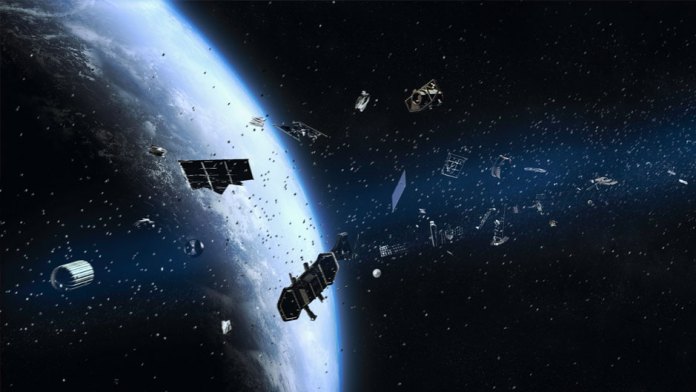No satellite stays the same. Just how much it affects can go undetected before something bad happens.
Carolin Frueh is one of a handful of researchers that have succeeded in using a technique that could diagnose a problem from thousands of kilometers away based on the way the satellite reveals sun.
“While you’re driving a car, you can’t get out of the car to check if something has dropped off or becoming damaged. But you understand that there might be a problem,” said Frueh (declared”free”), an assistant professor at Purdue University’s School of Aeronautics and Astronautics.
“An operator might notice that a satellite is unstable or not charging properly. An external perspective can tell whether it’s because something broke away, or when a lens or antenna isn’t properly oriented, for example.”
Perhaps not diagnosing the problem increases chances of losing or not having the ability to reestablish communication. When communication is lost, a satellite could turn into pieces of debris which stay in area indefinitely or for centuries unless removed.
This”space trash” poses a danger to other spacecraft. There are approximately 100,000 pieces of debris larger than a cent orbiting Earth, as reported by a U.S. Strategic Command database.
Space is a vacuum which puts pressure on a satellite. Transitions involving the heat of sunlight and the deep cold of the shadow of Earth also take a toll on time.
“You know about a satellite as it’s on the ground. Because, to carry up the satellite, parts of it need to be folded in, but that setup changes. When in space, you want the panels , stably oriented towards sunlight and also the antenna pointed toward Earth,” Frueh said.
“The longer a satellite is out there, the less you know about it.”
The sun always illuminates satellites, to the shadow of Earth apart from transitions. The light that a satellite reveals will help show the solution to a malfunction.
For using telescopes to collect the light reflected among its components or by a satellite, the approach calls. These objects might look as dots on a telescope image, similar to celebrities on a nighttime skies because satellites are far away.
Changes at the brightness of a”dot” over time have been listed as light curves. These curves are processed and used to extract data about an item’s appearance or rotational condition.
Light curves could be a more practical and less costly means to identify satellite problems in comparison with radar. While radar can get a more comprehensive image of a satellite when circumstances are favorable and that the satellite is at low altitudes, light curves can offer advice no matter how far away the satellite is from the planet’s surface. Light curves also rely on sun, whereas radar illuminates an object.
The more complex an item is, the more difficult it is to estimate for what the thing looks like using light curves, or fix. Since it’s casting a shadow onto itself the results also can be ambiguous; suppose that when a satellite part only appears broken?
Identifying and characterizing objects that are human-made with light curves is indeed mathematically complex that researchers use the technique to study asteroids. As bodies, asteroids have varied materials on sharp edges along with the surface .
But even answers from bends can offer information.
In 2015, Frueh’s laboratory detected a mystery object known simply as”WT1190F” using the Purdue Optical Ground Station telescope. Her and her collaborators discovered from light curves and related modeling that the object was almost surely human-made and a possible candidate for a bit of”Snoopy,” a lost Apollo 10 lunar module. The assignment was a part of a test.
A team of astronomers confirmed that the findings suggested the object came from Snoopy. Successes like these show that improving distance object identification with curves might be worth the struggle.
“It matters when we could state with 80% certainty what an item is, although getting that response can be hugely difficult. It’d be far less helpful, but simpler, to provide a hundred unique answers for what an item is, all with roughly 1% probability,” Frueh said.
Frueh’s laboratory is currently working on improving the likelihood that a curve characterizes and defines both complex and easy space objects.
The goal is that at five to ten years, the technique could not only reliably assist a satellite operator, but in addition supply rotation models and full form when guesses or no data regarding the item are available. These versions would show the different surface materials and sharp borders of tanks, which makes them more easy to identify.
With funds from the Air Force Office of Scientific Research, Frueh is developing ways to use light curves to increase awareness of objects from a satellite operator at the absence of data.
Info that light curves provide approximately satellites also can improve how they’re designed later on. Frueh’s laboratory has recognized objects orbiting Earth which appear to be the foil of satellites rip-off over time. These scents could dangerously create objects that are hard to track.
“The entire idea is improving space situational awareness,” Frueh said.
Space Technology News – Research and Applications
– Advertisement –
